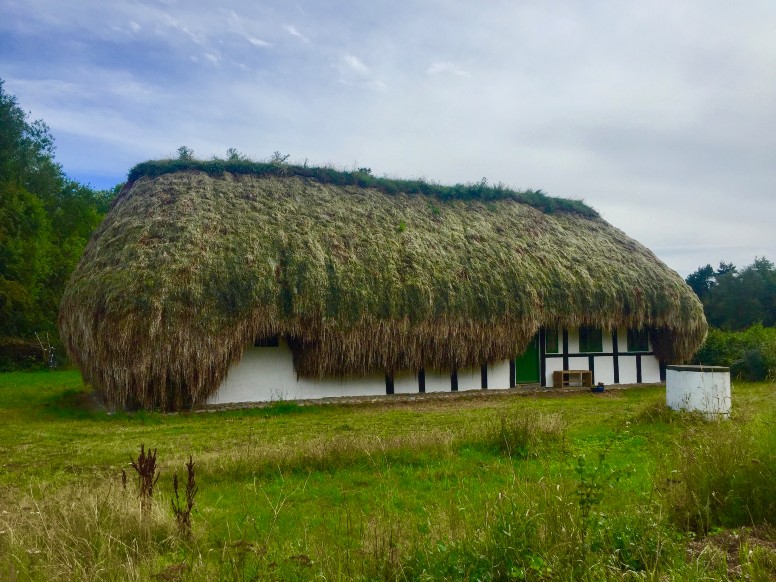
Eelgrass house on the island Læsø.
They look like hobbit homes. But it’s ordinary folks who live in them. It’s on the small Danish island of Læsø that these houses exist.
This summer, I took a bicycle journey around all municipalities of Denmark. The smallest municipality in Denmark is the island Læsø, with only 1764 inhabitants. But Læsø has what I think is some of the coolest looking houses in Denmark. And in the whole world for that matter.

Many of them look more like hobbit homes than houses regular folks live in.
Houses made from shipwrecks and eelgrass.
Back in the 17th century, the small Danish island Læsø made a living from salt production as well as from plundering shipwrecks. The sea around Læsø is quite difficult to navigate, as it’s not very deep.
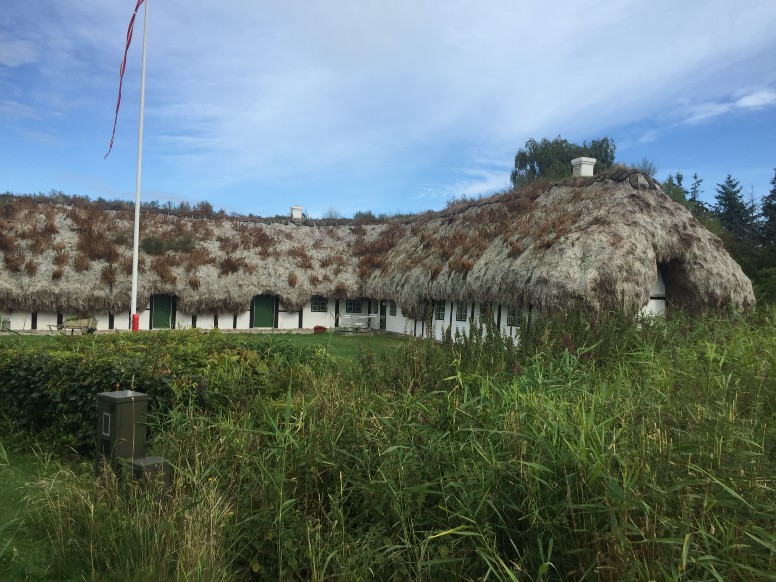
Many of them used to be farms.
That has resulted in many shipwrecks over the centuries. Because Læsø was poor, the shipwrecks was an actual income for the islanders. Apart from stealing the cargo of the ships, they also used the actual shipwrecks to build houses. the shipwrecks were used mainly for the roofing of the houses. And on top of that they put eelgrass.

Cute little house with alternative roofing.
Some people also call them seaweed houses.
You will often see these houses being referred to as seaweed houses (Tanghuse in Danish). But that is not totally correct, as eel grass is not seaweed. While seaweed is an algae, eelgrass is an actual flowering plant with roots. But eel grass can grow in salt water, which is very unusual. Eelgrass is often being referred to as a type of seaweed, even if it’s not totally correct.
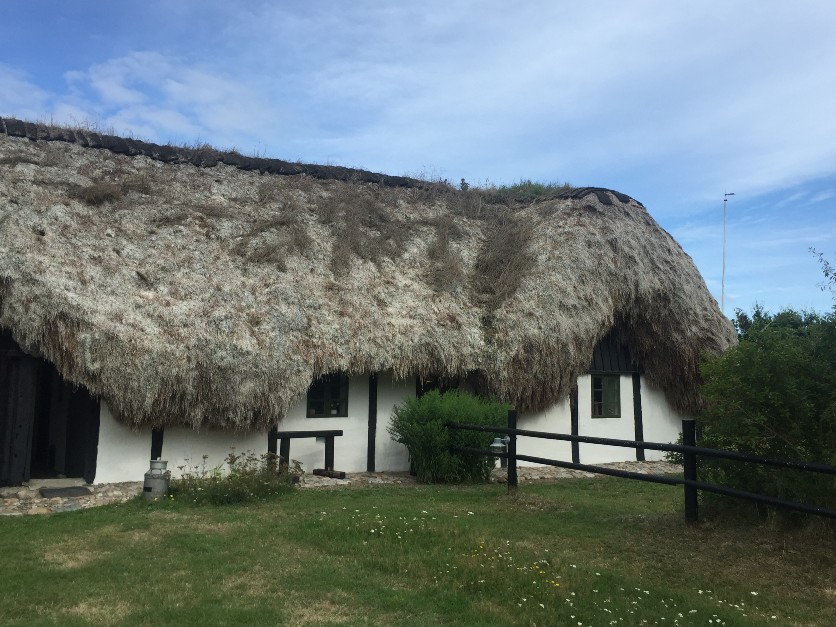
It’s not seaweed but eelgrass that the roofs are made from.
The eelgrass roofs were made by women.
It was mostly the women of the island that contracted the eelgrass roofs. The men typically worked at sea, or with the salt production. So the women were left to take care of the other chores.
Reed was the common plant to use for roofing in Denmark at that time. But it did not grow very well on the island. So they started using eelgrass instead.
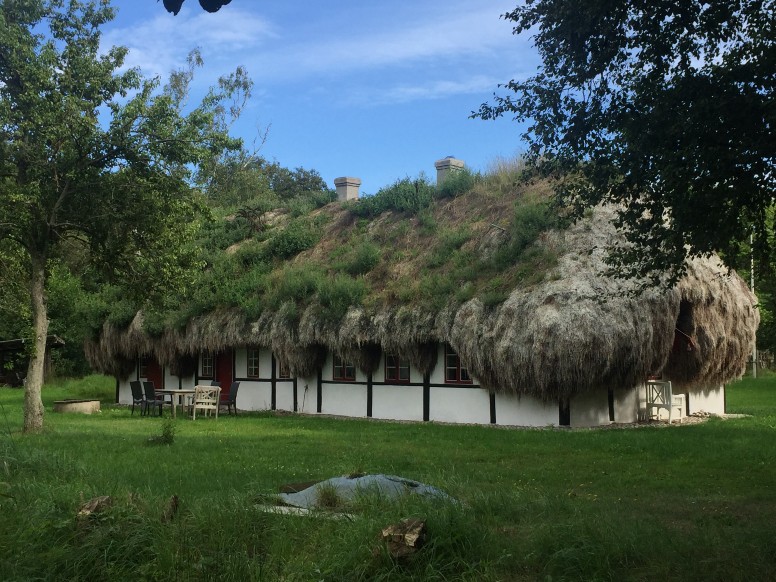
Some of the eelgrass keeps growing on the roofs.
The job with drying the eelgrass was labour and time consuming, as they would let it dry for several months. During that time, they would also pick out the micro algae from the eelgrass, preventing the eelgrass from rotting away, as it got older.
Because of that technique, the eelgrass roofs can actually last for more than 100 years, before they have to be replaced.
That makes the eelgrass roofs a very sustainable way to roof your house. Eelgrass is also carbon neutral.
And the houses look damn cool at the same time, if you ask me.
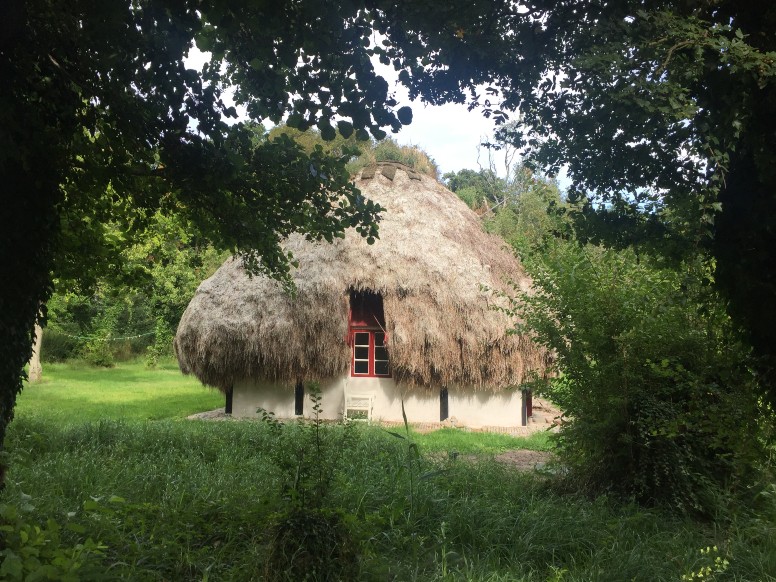
You can only love the look of these funny houses.
because eelgrass is a very common plant around the world, some people see this as a type of roof that could be made in many other places around the world.
The technique that is sued to dry the eelgrass and construct these roofs almost died out a few decades ago. But luckily the islanders have now seen what a unique thing they have on their little island. And while they were down to only about a dozen of these roofs a few years ago, construction of new eelgrass roofs are now seen again on the island.

Another house with eelgrass roof.
Where can you see the eelgrass roofs?
The eelgrass houses are located on the island Læsø, around the town called Østerby. Østerby is located on the eastern part of the island. The ferry docks on the western side of the island, but the island is only 20 kilometers long. So it’s easy to get around and find the houses.
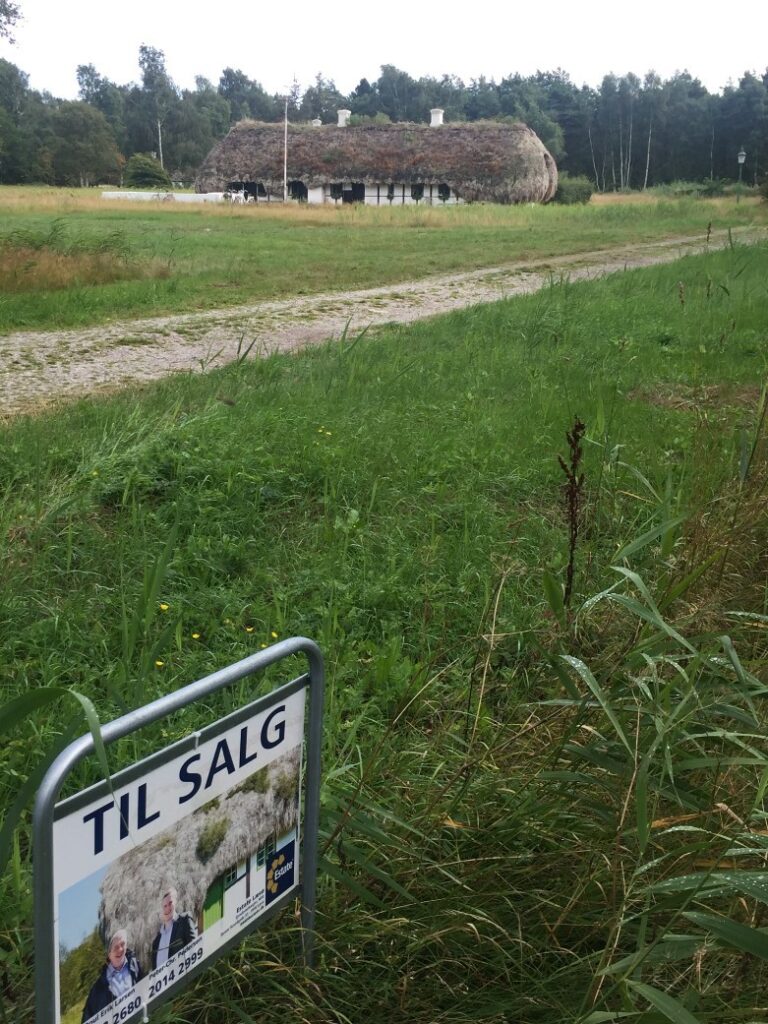
This eelgrass house was actually for sale.
How to get to Læsø.
Almost all visitors to Læsø arrive by ferry from Frederikshavn, which is located on the Jutland peninsula. The ferry leaves several times a day and timetables and prices can be found on this link
There is also a tiny airport on the island. But it only takes in tiny planes. and unless you actually want to hire a primate jet to get there, then I suggest that you take the ferry. You can of course also sail to the island in your own boat, if you have your own yacht.
Now if you are interested in reading another article about a Danish church that has a climbing wall on the church tower, then you can read about that on this link.
Another fascinating piece, my friend.
I hope you are able to be back on the road now doing what you do best.
Speak soon,
Fergy.
Hi’ Fergy.
I am actually back on the road again and is on Madeira Island this week. Was thinking about you last night when I had a few beers in the old part of Funchal.